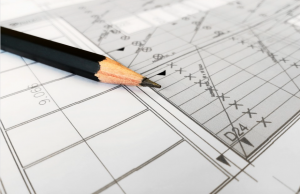We have talked a lot about BIM recently, but as a CAD services company, we also deal with PIM which stands for the Project Information Model. In PAS1192-2:2013 PIM is defined as “the information model developed during the design and construction phase of a project.”
Does the PIM change during the project lifecycle?
In the early stages of a construction project, the PIM will be a document that contains a lot of generic elements such as simple diagrams and 2D symbols which represent the graphic elements of the design. Naturally, as the project progresses these factors will be filled with more information and more and more detail will be added.

This detail will include specific objects that have specifications and method statements attached, along with space allocation operation, access and maintenance and so on.
How is the PIM developed?
The PIM is governed by the Master Information Delivery Plan (MIDP) which aligns with the Employer’s Information Requirements and supplementary BIM protocol. The information contained in the PIM is delivered to the project team through a series of data drops, which act as staging posts for the information manager. These data drops typically include:
- A series of building information models containing non-graphical data, associated documentation, and IFC files.
- COBie files and other structured data such as schedules
- Reports and other relevant documentation
How is the PIM validated?
One of the most critical parts of the PIM is making sure that the data contained in it is validated at every stage, in order to make sure it is accurate, complies with standards and is complete. This data should be in the Employer’s Information Requirements (EIR) along with the Common Data Environment (CDE) making it the shared responsibility for the whole team. The PIM should be managed within the CDE which will be used as the single source of information for the project, and this information can usually be broken down into four areas:
- Work in progress
- Client shared – this information should be checked, reviewed and approved before sharing with anyone else.
- Published: Information that has been signed off by the client or their representative
- Archive – this is the area where all change orders should be recorded, as well as progress of each project milestone.
What does the PIM contain?
As we are now working to BIM Level 2, the PIM needs to contain a variety of data and documentation, including the Building Information Model. Ensuring all of the data is effectively captured right from the start means that all of the teams involved in the project can collaborate efficiently, as they all have sight of integrated, well-structured information.
What happens to the PIM at the end of the project?
At the end of the project, some elements of the PIM are transferred into the AIM – as laid out in PAS 1192:3. This means that the information contained within the PIM can be used during the operational phase of the building.
If all of this sounds a little confusing, don’t worry this is something we can help with. For more information about our BIM and CAD Services please call us on 0161 427 0348 or send us an email to office@thecadroom.com

